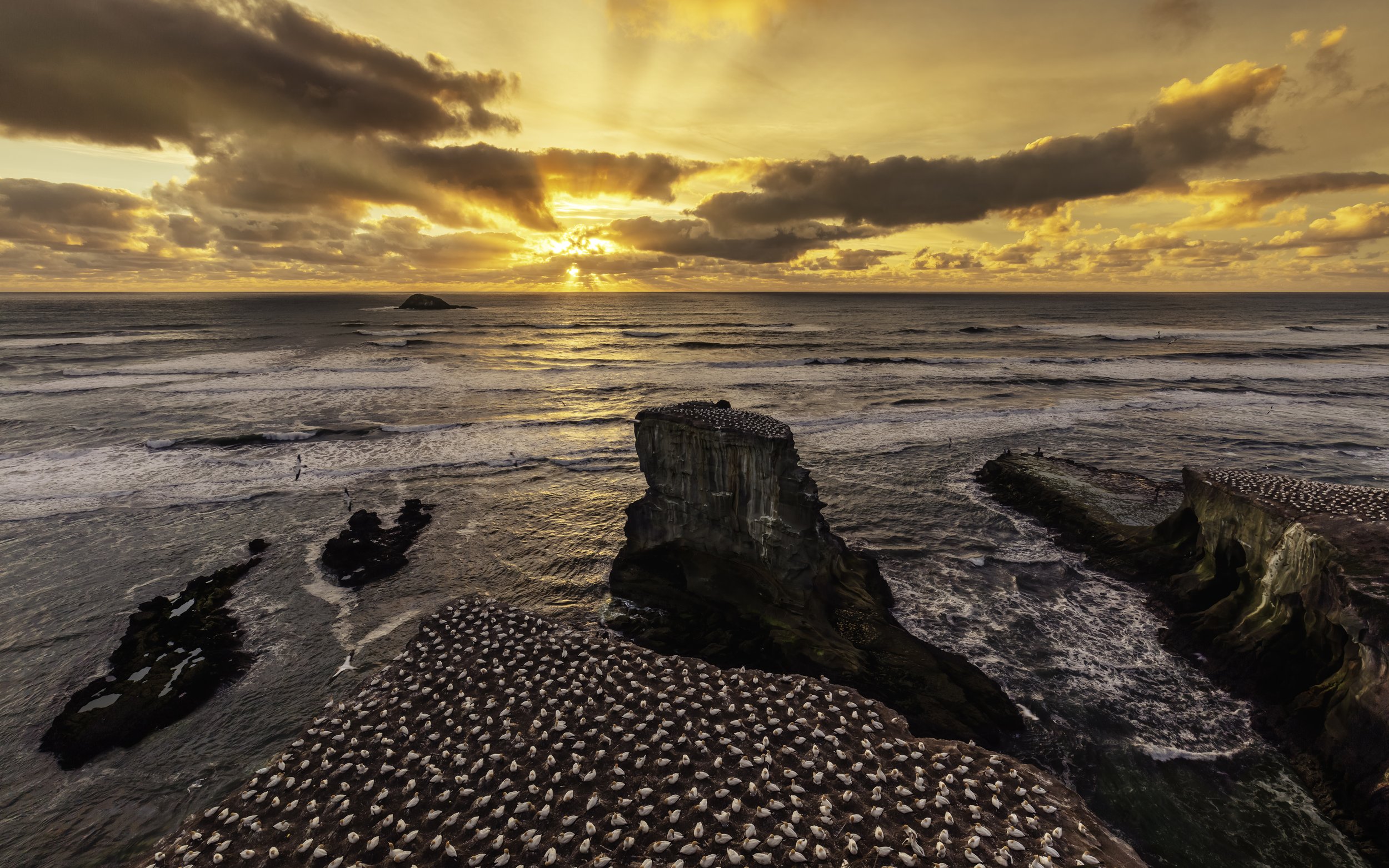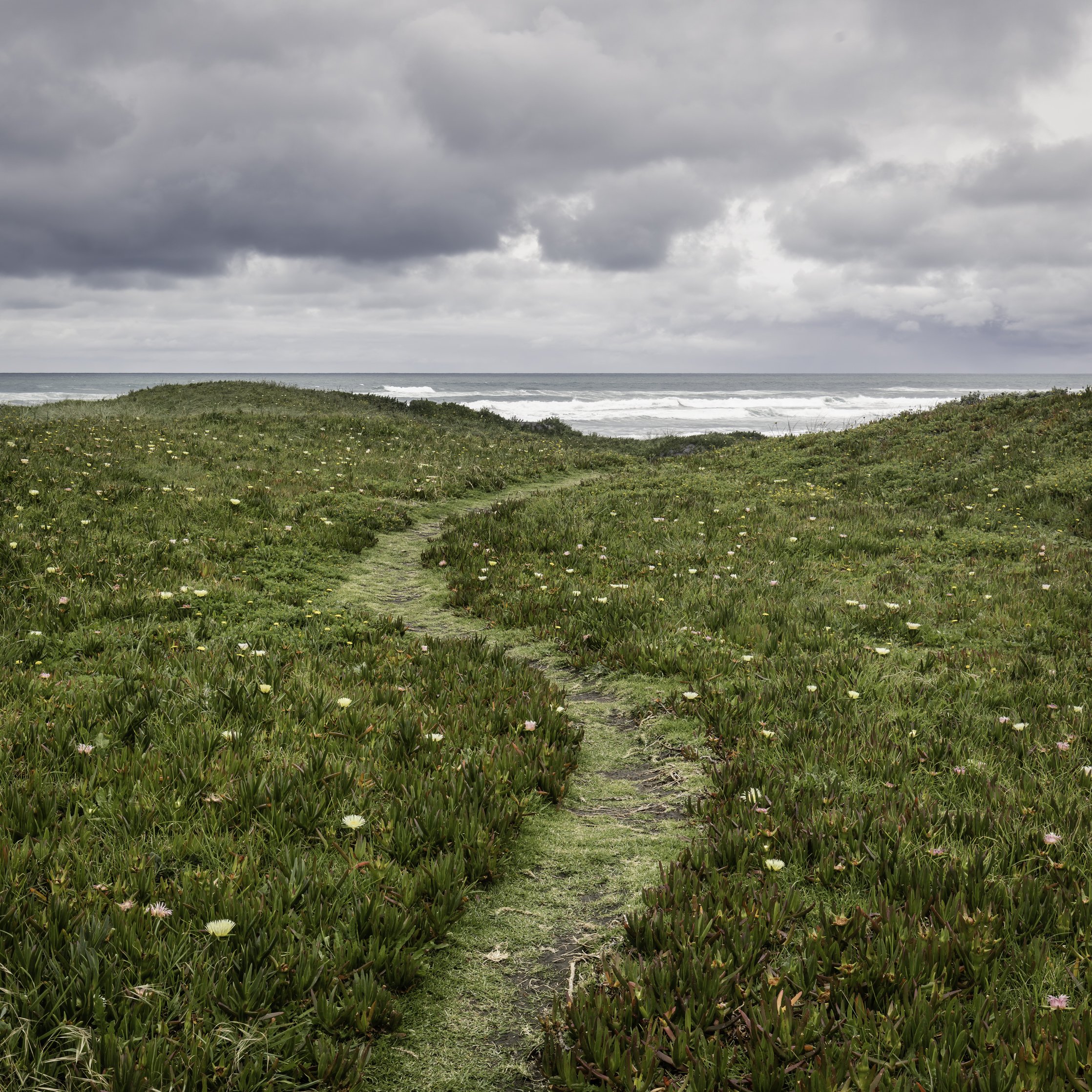As I contemplate the majestic beauty of New Zealand, my mind drifts towards a particular location that has left an indelible impression on me - Muriwai Beach. This natural wonder is a veritable paradise that beckons to all those who are fortunate enough to set foot on its sandy shores. Situated about 40 kilometers from the heart of Auckland, Muriwai Beach is a testament to the grandeur of nature that surrounds it. To reach this idyllic location, one must traverse a winding road that leads to the Tasman Sea. The rocky cliffs that tower above the beach, forged by volcanic activity, are a sight to behold. The sandy beaches that line the coast are a sight that will take your breath away. In November of 2017, I was privileged to spend two unforgettable nights at Muriwai Beach. However, the fleeting nature of time means that to truly capture the essence of this natural wonder, one must prepare well in advance. As a nature and landscape photographer, I am captivated by the opportunities that await at Muriwai Beach.
In this article, I hope to provide an overview of the countless photographic opportunities that abound in this breathtaking location, allowing you to make the most of your time and bask in the splendor of this awe-inspiring natural wonder.
Recommended lenses:
wide-angle zoom (eg: 16-35mm) - nice to have
normal zoom (24-70) - must have
telephoto zoom (eg: 100-400mm) - must have
Recommended equipment:
Tripod - must have
ND Filter - must have
Polarizer - must have
Map
Points of Interest:
Bird Colony
Rocks and Blowholes
Northern Beach
Southern Beach
Bird colony:
This subspecies of gannet is native to Australia but is most prominent in New Zealand, where the colony at Muriwai Beach is a unique sight to behold. Unlike most gannet colonies situated offshore, this colony is located on the mainland, allowing for convenient and easy access. A large parking lot adjacent to the colony provides a convenient starting point for exploration.
Observation platforms and well-placed paths allow visitors to observe these magnificent birds in their natural habitat, as they incubate and rear their young. The birds' incredible aerial acrobatics, as they skillfully use the cliffs' updrafts, make for an exciting opportunity to capture stunning photographs of the birds in flight. A fast shutter speed of at least 1/1000s is recommended for optimal results.
The bird colony can also serve as a striking foreground for the perfect "Grand Visa" shot, particularly during the golden and blue hours of the evening. The interplay of colors during sunset can be truly awe-inspiring, with magenta hues bathing the entire shoreline in an unforgettable display of natural beauty. My personal experience in this location was unforgettable, as I was blessed with perfect weather and stunning light that allowed for some truly breathtaking photographs.
Rocks and Blowholes (Flat Rock and Ōtakamiro Point):
The rugged rocks of Muriwai Beach are at the mercy of the tide, and visitors must exercise caution when exploring this treacherous terrain. During high tide, the waves crash against the rocks with such force that even the most intrepid adventurer would be swept away by the foaming sea water. It is wise to observe from a safe vantage point, such as the metal stairs that lead down to the rocks, where one can capture the magnificence of the waves without putting oneself in harm's way. With the right shutter speed, the motion of the water rushing over the rocks can be captured in all its atmospheric glory, creating stunning images that are sure to take one's breath away.
When I was there, 2 fishermen were also doing their work, due to their experience they also ventured out onto the rocks during high tide. The human element in the frame helps the viewer to better assess the size of the waves and rocks, as this gives him scale.
During low tide, the panorama of the rocks is no less impressive, with a wealth of fascinating marine life revealed in the tidal pools and cracks of the rocks. Visitors are encouraged to explore these areas with care, taking time to appreciate the myriad of crabs and fish that inhabit this unique ecosystem. A journey to Muriwai Beach is truly an unforgettable experience, where the timeless dance between sea and stone is played out in magnificent splendor.
Tip: You should download a tide app onto your phone so that you know what time of day the high and low tides are at their high and low points. I used the Android app "NZ Tides" here, it's free and the tide tables are presented in a very clear and simple way. The app was essential to me when planning photoshoots on the coast.
North Beach (Muriwai Beach)
As I spent my days at the bird colony and Ōtakamiro Point, I couldn't help but feel that time was fleeting and I yearned for more moments to explore the treasures of North Beach and South Beach. During my brief sojourns in these areas, I was immediately struck by the untapped potential they held. The North Beach, in particular, was an impressive display of natural beauty, with lush green grass and vibrant wildflowers, such as the radiant yellow lupines, blooming in November. These elements served as an excellent foreground for photographic compositions, and the views from this vantage point were breathtaking. From here, the bird colony and the rugged cliffs that envelop it were visible in all their glory, and with the help of a telephoto zoom lens, I was able to capture stunning details of the northern coastline.
South Beach - Maukatia (Māori Bay)
I spent merely half an hour exploring this area. A steep path leading directly from the parking lot descends towards the beach. To the right, nestled among the rocks, lies a cave that is frequently flooded by the tides. Experimenting with different shutter speeds can yield rewarding results here, although I regretted not having brought my tripod along on this excursion. Progressing southward, the stunning views of the cliffs and bird colony gradually reveal themselves. At one point, a striking gap emerges between the mainland cliffs and the sea stacks. With a telezoom or wide-angle lens, I believe there is ample potential for capturing exceptional images in this location.















